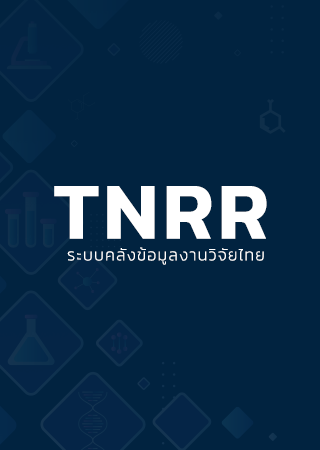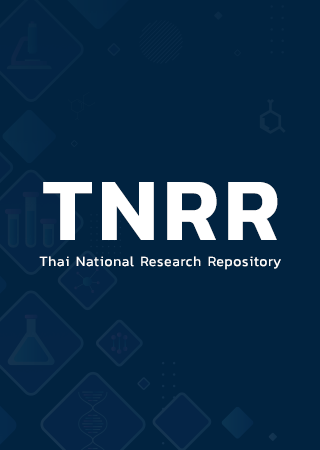Description
การจัดการขยะมูลฝอยชุมชนในปัจจุบันส่งเสริมให้มีการใช้ทรัพยากรอย่างหมุนเวียนเพื่อให้เกิดประโยชน์สูงสุด โดยกรอบแนวคิดนี้ได้มีการนำข้อมูลเชิงปริมาณมาประยุกต์ใช้เพื่อส่งเสริมให้มีการจัดการขยะมูลฝอยชุมชนควบคู่ไปกับการใช้ทรัพยากรอย่างมีประสิทธิภาพ ดังนั้นแผนงานวิจัย จึงมีวัตถุประสงค์ศึกษาการไหลของขยะมูลฝอยตั้งแต่ต้นทางตลอดจนปลายทาง โดยการประยุกต์ใช้หลักการวิเคราะห์การไหลวัสดุ และการศึกษาปริมาณและองค์ประกอบมูลฝอยในชุมชนและสถานที่กำจัดมูลฝอย เพื่อที่จะประเมินอัตราการเกิดขยะมูลฝอยและอัตรารีไซเคิลขยะมูลฝอย รวมทั้งปัจจัยที่ส่งผลต่อการเกิดขยะมูลฝอยของประเทศไทย นำร่องผลิตภัณฑ์ 6 ชนิด ได้แก่ แก้ว กระดาษ พลาสติก โลหะ อะลูมิเนียม เพื่อสร้างฐานข้อมูลที่สามารถนำไปสู่การวางแผนและกำหนดนโยบายการจัดการขยะมูลฝอยชุมชนอย่างเป็นรูปธรรม ในการศึกษาผังการไหล ปริมาณและองค์ประกอบมูลฝอยในชุมชน พบว่า ในภาพรวมทั้งประเทศ เขตการปกครอง และจำนวนประชากร เป็นปัจจัยสำคัญที่ส่งผลต่อปริมาณมูลฝอยที่เข้าสู่สถานที่กำจัด ขณะที่ปัจจัยอื่นๆ ที่ทำการศึกษานั้นส่งผลน้อยต่ออัตรามูลฝอยที่เข้าระบบกำจัด คาดการณ์ปริมาณมูลฝอยจากสมการ พบว่า มีปริมาณมูลฝอยเกิดขึ้น ณ แหล่งกำเนิด 63,215 ตัน/วัน มีปริมาณมูลฝอยที่เข้าสู่สถานที่กำจัด 50,772 ตัน/วัน ซึ่งอัตราการรีไซเคิลของขยะมูลฝอย ได้แก่ แก้ว กระดาษ พลาสติก โลหะและอะลูมิเนียม เท่ากับ ร้อยละ 40 45 18 54 84 ของการบริโภคผลิตภัณฑ์นั้นๆ ตามลำดับ ส่วนขยะอินทรีย์ ถูกจัดการด้วยการฝังกลบ ทำปุ๋ย เผาทำลาย และวิธีอื่นๆ 8 เท่ากับร้อยละ 69 15 9 และ 8 ของขยะอินทรีย์ที่เกิดขึ้น ตามลำดับ จากผลการศึกษาทั้งหมดนำไปสู่การจัดทำข้อเสนอแนะเชิงนโยบายในการจัดการขยะมูลฝอยชุมชนของประเทศไทย โดยในระยะแรกควรมีมาตรการในการดึงทุกภาคส่วนเข้ามามีส่วนร่วมในการจัดการฐานข้อมูลขยะมูลฝอยร่วมกัน โดยผลักดันให้มีนโยบายการให้เก็บข้อมูลเชิงปริมาณทั้งระบบโดยเริ่มตั้งแต่ข้อมูลต้นทาง ได้แก่ ข้อมูลผู้ผลิตและผู้บริโภค และข้อมูลปลายทาง ได้แก่ ผู้ประกอบกิจการรีไซเคิลและจัดการของเสีย ซึ่งทำให้ข้อมูลจากผู้ผลิต ผู้บริโภค ผู้รับบำบัดและกำจัดมูลฝอยได้เข้าสู่ฐานข้อมูลขยะมูลฝอยอย่างถูกต้อง เพื่อเพิ่มประสิทธิภาพการประเมินและคาดคะเนปริมาณการเกิดขยะมูลฝอยอย่างถูกต้องแม่นยำ รวมทั้งผู้มีส่วนเกี่ยวข้องกับทุกภาคส่วนควรตระหนักและมีส่วนร่วมรับผิดชอบในการจัดการขยะมูลฝอยของตนเอง คำสำคัญ : การวิเคราะห์การไหลวัสดุ ขยะมูลฝอยชุมชน การจัดการของเสีย การคาดการณ์ของเสียที่เกิดขึ้น องค์ประกอบขยะมูลฝอย แก้ว กระดาษ พลาสติก โลหะ อะลูมิเนียม และมูลฝอยอินทรีย์<br><br>To date, municipal solid waste (MSW) management attempts and promotes the utilization of renewable resources to maximize benefits. In this framework, quantitative data have been applied to promote environmentally friendly MSW management with the efficient use of resources efficiency. The study objective is to investigate the waste flow from the source towards its end of life by applying the material flow analysis (MFA) combined with the MSW quantity and composition study in the local communities and their disposal sites and is to determine the MSW generation and recycling rates, as well as factors affecting the MSW management in Thailand, through 6 targeted products, namely glass, paper, plastic, metal, and aluminum. The result of this work aims to develop the MSW database in order to plan a concrete MSW management policy. The results of MSW flow analysis coupled with its quantity and composition indicated that the country, regions, and municipality, according to the civil registration and population, had an influencing factor affecting the amount of MSW entering the disposal sites. In contrast, the other factors in the study were insignificant. The projection from the regional equations showed that the MSW generated at the source was 63,215 tons/day, of which 50,772 tons/day of MSW was collected to the treatment facilities. The estimated total recycling rate of paper, plastic, metal, and aluminum, were 40, 45, 18, 54, and 84 percent of the product consumption, respectively. The organic wastes were dominantly disposed of at landfills, up to 68% of the waste generated. The study results brought the information to support the policy recommendations on MSW management in Thailand. In the first phase, the measures could draw a driving force to all sectors involved in developing the MSW database. The criteria to drive the MSW collection quantitative data, from the production stage, including the production and consumption data, and its end of life from the waste recycling and management operators. Thus, the obtained MSW data will be gathered into the database properly. The result will bring improvements in the efficiency of the assessment and accuracy of the prediction. Together, those involved in all sectors should be aware of and take part in their waste management responsibility.Keywords: material flow analysis (MFA), municipal solid waste (MSW), waste management, , solid waste composition, glass, paper, plastic, metal, aluminum, and organic solid waste
Date of Publication :
02/2023
Publisher :
สำนักงานการวิจัยแห่งชาติ (วช.)
Category :
รายงานการวิจัย
Total page :
77012 pages
People Who Read This Also Read


